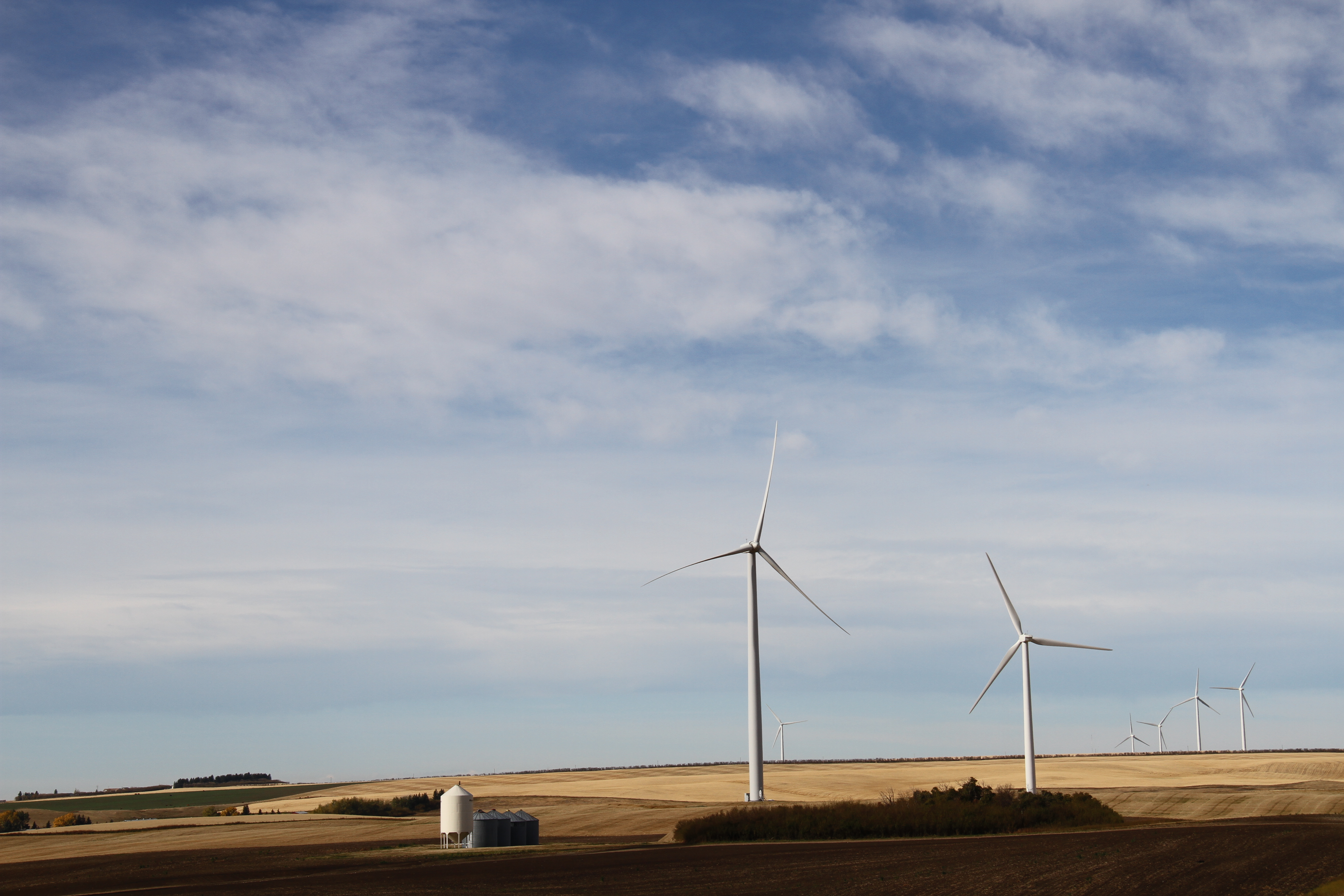
We need our bats
August 30, 2024
- •
- •
- •
But mouse is a misnomer; it is better to think of bats as tiny flying bears.

Migratory bats are under increasing threat from the development of wind farms along their migration paths. Photo © C. Olson.
By Kennedy Halvorson and Ruiping Luo
Read the PDF version here.
The Germans were feeling a bit whimsical when they settled on this nocturnal animal’s name: fledermaus, a mouse that flutters. The French were blunter, dubbing the only mammal capable of true flight chauve-souris or the bald mouse. But mouse is a misnomer; it is better to think of bats as tiny flying bears.
Like bears, bats are long-lived. Records of Alberta’s most common species, the little brown bat (Myotis lucifugus), document individuals over 30 years old. Reproductively, bats share small litter sizes with bears, typically giving birth to one pup each year. Bats and bears both raise their young and live communally in female-led family units — while these units are much smaller for bears, consisting of a mother and her growing cubs, female bats rear their pups in maternal colonies, alongside many generations of mothers, grandmothers, and great grandmothers.
Found across the globe, bats have adapted to a range of different environments. Canada has 18 species of bats, nine of which are found in Alberta. Six species overwinter in the province by hibernating like bears, accumulating fat stores over the warmer months and suppressing their metabolism and activity throughout winter. Over the last few decades, white-nose syndrome has devastated hibernating bats in Eastern Canada, with over 90 percent population declines. The disease causes bats to rouse from torpid states too often, which rapidly depletes their caloric reserves and ultimately leads to death as they no longer have the energy to make it through to spring. It is truly a devastating disease, which is particularly concerning considering the fungus responsible, Pseudogymnoascus destructans was detected for the first time in Alberta in 2022.
The remaining three bat species in the province are migratory; the hoary bat (Lasiurus cinereus), eastern red bat (Lasiurus borealis) and silver-haired bat (Lasionycteris noctivagans) fly south annually to escape the cold. Unfortunately, this tactic also presents their greatest threat. The development of renewable energies, specifically wind turbines, has created a major hazard along their migration routes. The turbines are a source of collisions, and even if the blade doesn’t hit the bat, the drop in air pressure caused by the fast-moving blade can be fatal. As more wind turbines are built along migration paths, the threat to migrating species increases.
However, mitigation is possible. Research shows that locking the blades overnight during migratory seasons, particularly when wind speeds are low and the weather is clear, is extremely effective at reducing fatalities and results in almost negligible losses in power generation — the real challenge is getting industry to adopt this practice.
Pesticides and habitat loss also pose a challenge for Alberta’s bat populations. Pesticides reduce the availability of insect prey, which can lead to nutritional deficits and starvation. More directly, bats can come into contact with pesticides by eating contaminated insects, potentially causing negative health impacts for bats, reduce growth and breeding success, and sometimes be lethal.
Considering bats are vital to the health of forest, grassland and wetland ecosystems, loss of their populations could mean trouble for both ecological communities and agriculture. As insectivores, bats regulate insect populations within ecosystems and croplands and are one of the most important animals for natural pest control. Weighing only seven to nine grams, little brown bats can catch over 1,000 insects in an hour alone. With these stats, an entire colony can considerably decrease agricultural pest populations and reduce the need for pesticides. In the United States, they are estimated to contribute between $3.7 and $53 billion per year to the agricultural industry.
These benefits may be lost if bat populations continue to decline, necessitating increased protections. Environment and Climate Change Canada (ECCC) recently proposed listing the three migratory bat species as Endangered under the Species at Risk Act (SARA), a listing that AWA strongly agrees with and advocated for during the ministry’s comment period. These bat populations have decreased significantly across Canada and are expected to suffer a further decline of 50 to 90 percent over the next 50 years without interventions. To have any chance of protecting these species and the important ecological functions they provide, we need to ensure sufficient habitat is available throughout the entirety of their ranges, keep wind turbine development away from known migration routes, and implement operational mitigations at existing facilities. Listing these species under SARA would be the first step in establishing protections for Alberta’s tiny flying bears.